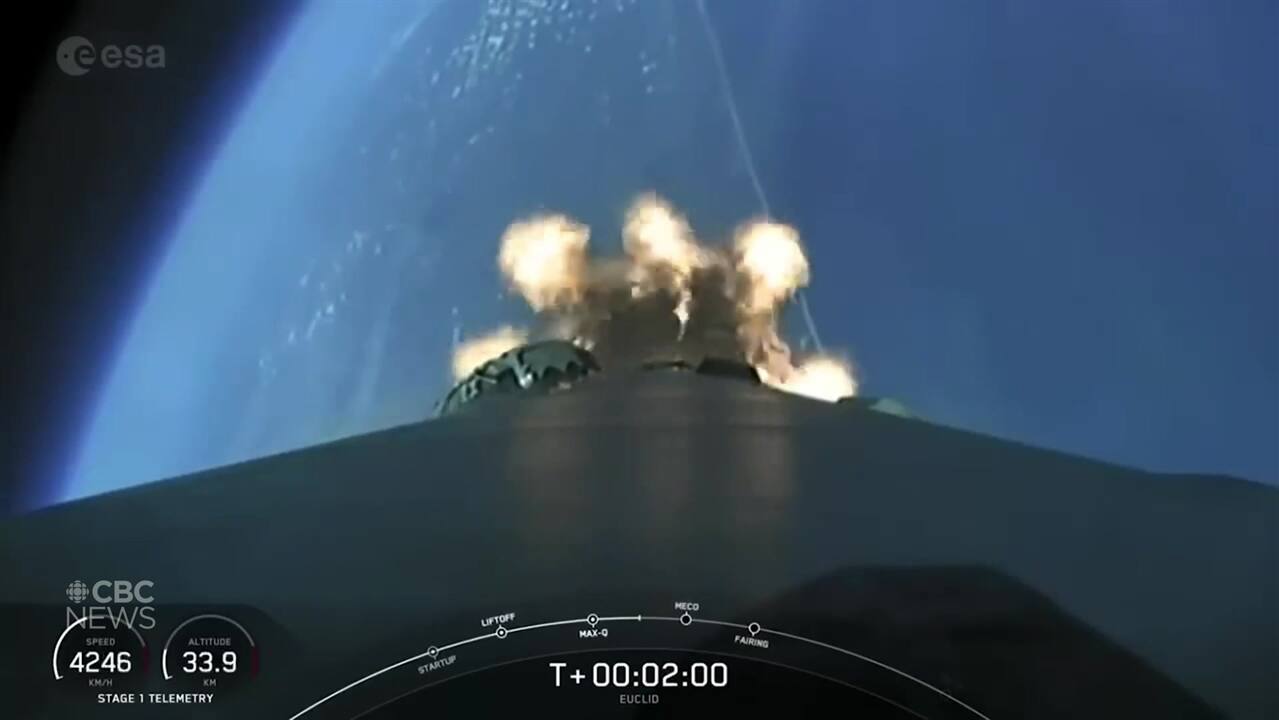BC scientists hopeful as international project launches Euclid spacecraft to map dark matter

Several scientists in British Columbia are about to peer into the darkest parts of our universe.
Part of a global consortium, the astronomers eagerly watch as a ship they helped design hurtles through space.
The Euclid spacecraft lifted off the planet on Saturday on a SpaceX rocket, on a mission the consortium intended to create the best-ever three-dimensional map of the known universe.
Their hope is to understand dark matter and dark energy, phenomena that make up 95 percent of the cosmos, but which remain a mystery.
“Most of the universe isn’t made up of atoms,” University of BC astronomy professor Douglas Scott told CBC News. “It’s made of one kind of material called dark matter and another kind of material called dark energy.
“And while we have names for these things, we really don’t know what they are.”
The Euclid spacecraft, on an unmanned mission involving several Canadian scientists, launched on July 1 on a SpaceX Falcon 9 rocket. It will create a 3D map to better understand dark matter in the universe.
Scott is one of approximately 2,000 scientists from 17 countries involved in the design and planning of the instruments aboard Euclid.
He said the team includes about 30 Canadian scientists, in addition to some of their students.
Overseen by the European Space Agency (ESA), the mission’s $1.4 billion price tag is covered by a number of countries, including Canada.
It will take the ship about a month to reach its destination and observe a third of the sky. With various instruments, including a kind of telescope, scientists hope to be able to investigate 10 billion years of the evolution of our universe.
The mission took 12 years of scientific preparation and engineering planning, according to the ESA.
The Euclid satellite will remain in space for six years and the first images are expected in two months.
The ship contains a telescope with a diameter of 1.2 meters, as well as a camera that can capture wavelengths visible to the eye, and a device to capture near-infrared waves.
The Euclid departed from Cape Canaveral, Florida on Canada Day. The project hired the private company SpaceX to ship the ship aboard its reusable Falcon 9 rocket, which took it to space and returned safely to Earth.
Originally, the Russian space agency was supposed to launch the Euclid, until geopolitical events took a turn for the worse with the country’s invasion of Ukraine.
The early edition8:09Euclid space mission launched
Scientists will investigate the evolution of the dark universe
Whether or not the mission reveals the mystery of dark matter and dark energy, other scientists are eagerly awaiting data that could help shine a light into the darkness of our cosmos.
“We don’t know what it’s made of and it’s clear that sooner or later there will be implications for everyday life,” UBC astronomer Ludovic Van Waerbeke told CBC’s The early edition on Monday. “There’s a great element of curiosity … also this element of new discovery that might be there.”





